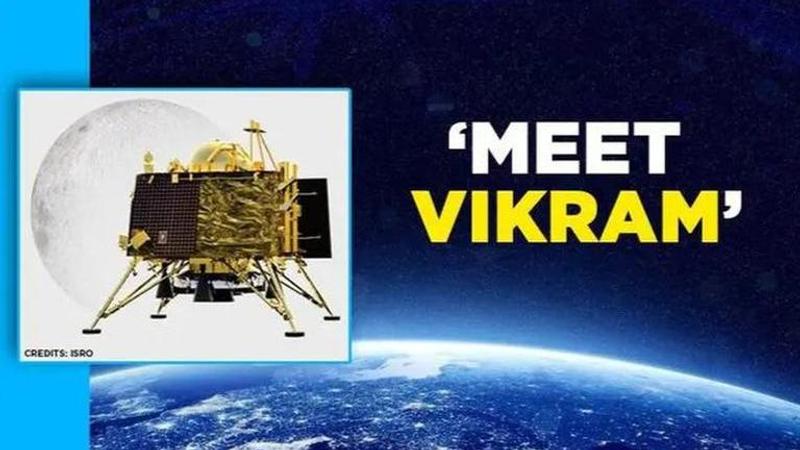Published 15:48 IST, September 6th 2019
Chandrayaan-2: Meet Vikram- ISRO's Moon lander set to make history
Here's a look in detal at Chandrayaan-2's historic Vikram lander, which is all set to soft-land on the moon in a few hours, and what it will do on the Moon

Chandrayaan 2’s Vikram lander is just hours away from a soft-landing on the lunar surface on Saturday, in the early hours of September 7. The lander has been exclusively designed by the Indian Space Research Organisation to execute soft-landing on the lunar surface. It has been named after Dr. Vikram A Sarabhai, who is also known as the Father of the Indian Space Programme. The Vikram Lander has been devised to communicate with International Deep Space Network (IDSN) at Byalalu near Bangalore, as well as with the Orbiter and Rover of the spacecraft.
Vikram’s Specifications
The Vikram lander is equipped to function for one lunar day, which is equivalent to about 14 Earth days. Its health has been continuously monitored by the Mission Operations Complex (MOX) at ISRO Telemetry, Tracking, and Command Network (ISTRAC) in Bengaluru with support from IDSN.
Vikram is built in a manner where it needs to land on its three legs. If the three legs of Vikram do not land properly on the Moon, there will be great difficulty in releasing its rover. Made up of three payloads Vikram Lander also holds the Moon rover within its structure called Pragyan. The three payloads inducted in Vikram Lander are RAMBHA, ChaSTE, ILSA.
The Payloads
RAMBHA or Radio Anatomy of Moon Bound Hypersensitive ionosphere or Atmosphere is a payload that will be used to measure information in the highly dynamic plasma environment prssent in the ionosphere of the Moon. The primary objective of this payload to measure the ambient electron density near the lunar surface. This payload is proven to be an effective diagnostic tool to gather information in such conditions. RAMBHA will also measure the temporal evolution over the moon’s surface under varying conditions.
ChaSTE or Chandra’s Surface Thermophysical Experiment is the payload which will help measure the vertical temperature gradient and thermal conductivity of the lunar surface. ChaSTE operates in two modes out of which one helps in passive mode operation which helps in measuring the temperature at different depths. One the other hand, the active mode operations help in measuring temperature variations in a set period of time.
The third payload ILSA or Instrument for Lunar Seismic Activity is a seismometer that can detect minute ground displacement, velocity, or acceleration caused by lunar quakes. Its primary objective is to characterise the seismicity around the landing site.
Updated 20:21 IST, September 6th 2019





